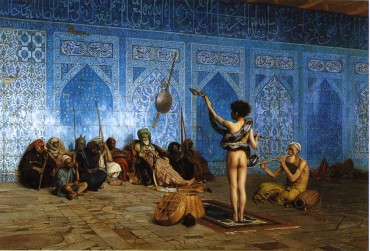
Jean Leon Gerome, Snake Charmer, 1870. Exotic representation of the Orient Edward Said has used for the cover of his book.
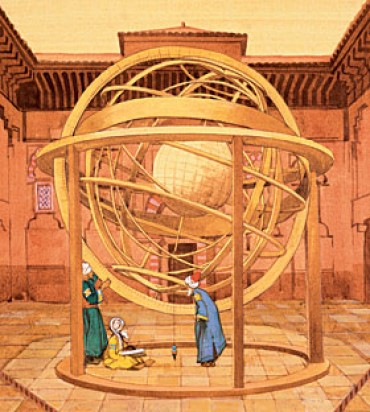
Cosmic reality of the islamic world view
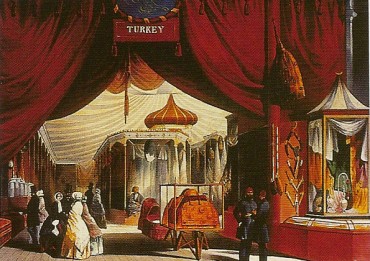
Turkish Pavilion, London 1851
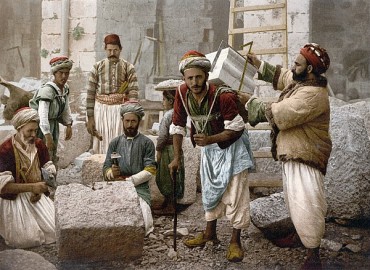
Arab master stone masons in Jerusalem
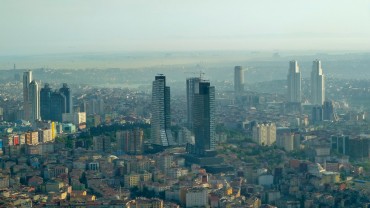
Istanbul growing

Typical TOKI developments
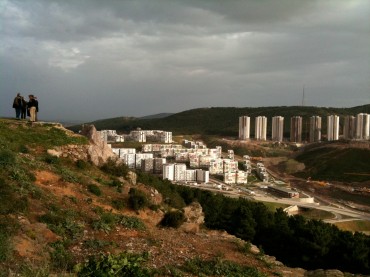
Gated communities, Turkey
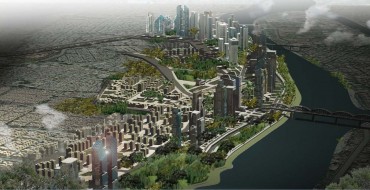
Cairo 2050, project presented slightly before the end of the Mubarak Era

Amman, panoramic view with Abdali project
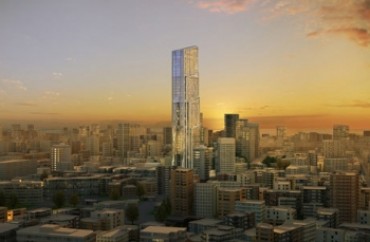
Beirut, panoramic view with Sama project

Rami Daher, Postcards, Stamps & Steps: Amman 2: The City of Many Hats

Rami Daher, Postcards, Stamps & Steps: Amman 7: Narratives of Consciousness and Resistance

Double humped camel at the center of the Massar Childrens Disovery Centre
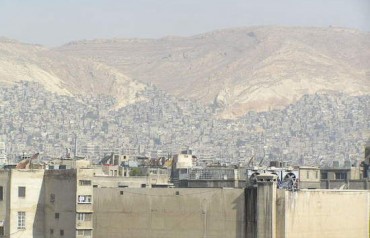
Damascus in its natural context

“Artistic impression” of the Prime Minister Erdogan’s Istanbul Canal project

Beirut Modern, Raoucheh
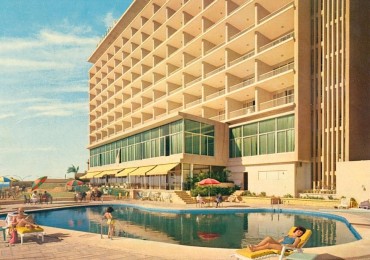
Beirut, Carlton Hotel, in the Seventies
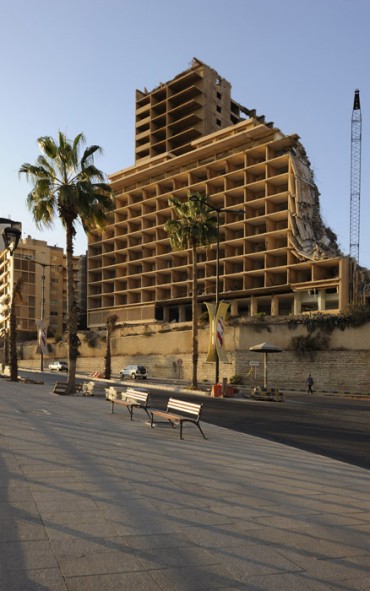
Beirut, Carlton Hotel, recently in demolition
4.7.2012 – Issue 6 - Middle East 1 – Daher Rami, Ivanišin Krunoslav, Samhouri Wael, Arbid George, Adanali Yasar, Baumgartner Marianne – Interviews
POSITIONS 1
Interview with Yaşar Adanali, George Arbid, Rami Daher, and Wael Samhouri
DEFINITION
Yaşar Adanali: Defining the Middle East, its boundaries, different meanings, layers is by itself a very difficult, value-bounded and mainly a political challenge. Especially, when one looks at the region from the perspective of its “western” neighbors, many stereotypes and preconceptions get in to the scene. It could be a mythical place where anything can happen, yet at the same time, for many it is a place that is frozen in time that nothing tangible can really change… However, when I look at the contemporary Middle East from Turkey, what I see is a great potential, energy and hope, not only for the region but also for Turkey, Europe and the rest, which come along with lots of contradictions of course.
Rami Daher: The work of Edward Said in general, and Orientalism in particular would help us understand the processes of construction or inscription of a specific Orient in the minds of Europeans, local nationals and the World. Inscription mechanisms (surveys, documentation, military surveys, travel literature, other) work to create the “Other”, the “Opposite” to Europe which legitimized and led, through direct modes of imperialism, to control, exploitation, and hegemony. Europe was made to be rational, scientific, virtuous, mature, and “normal” while the Orient was imagined and made to be irrational, depraved, childlike, non-scientific but exotic, and “different”. It is only by examining Orientalism as a discourse, one can only understand the complexity of this “systematic discipline” by which Europe was able to manage and even “produce” the Orient in the 19th and 20th centuries...
As critical political geographers have shown, it is important to move beyond the acceptance of geopolitics as a reality of world politics and to examine critically the ways in which geopolitical terms are defined and the significant social meanings they hold. For example, the following three geopolitical and geo-cultural categories of Bilad al Sham (1); the Mashreq (2), or the Levant (though different in meaning, genealogy, and connotations based on the privileged stand point and the discursive practices that facilitated the inscription of such categories) refer to generally the same geographic region which encompasses the countries of Jordan, Syria, Lebanon, and Palestine. While all the three geopolitical and geo-cultural categories are constructed and can be contested and become subject of scrutiny, some had emerged from within the region and others had been part of colonial or neo-imperial imagery of the region. The Middle East as a geographical term according to Dalby suggests the historical legacy of imperial specifications of the region. The term comes from “earlier British designations of the world, which have been maintained on the maps and in the geopolitical imaginations of policy makers”. Yet, these different places have forces of unity that goes (I think beyond architecture) such as language, religion, and I would add current global transformations that are uniting the whole world and not just places of the Middle East.
Wael Samhouri: It is unfortunate that the European perspective of the Middle East architecture and culture in general is formed either by a most “commoners” of books and movies (the exotic Arabian Nights and early Hollywood depictions of Scheherazade and Ali Baba) or more “serious”, albeit prejudiced, writings of the Orientalists, both of which with rather gross generalizations that are not only subjective but misleading to the reader or viewer. A more serious view would prove that this culture has a world view that is much richer and its architecture is less “romantic” and more “cosmic” in its reliance on art, science and philosophy. A culture with sound building traditions that have a common history of ideas with Europe deeper than one would expect...
George Arbid: ... But the best way to understand the Middle Eastern places is from within, from the actual practice: How is culture produced and by whom?
What agenda does it actually serve to continue to talk about “Arab architecture” or “Middle East architecture” per se? The best way to understand the architecture of the place would be to consider it from the perspective of architecture itself. Issue of “identity” will come then by itself, almost naturally. The less stress you put on the identity of the place, the better architecture you can produce. On the other hand, we can speak specifically about each Middle Eastern country because they are very different. The problem appears when one generalizes, saying that there is a region that can be defined using the same words. But the way architecture is produced in different countries is very different, climatic and geographic conditions are different, even the construction techniques are different. Therefore, I am suspicious about talking about that region as a region per se.
MODERNIZATIONS AND RUPTURES
Wael Samhouri: The Middle East has undergone an architectural/ urban transformation with the advent of Modernism. But it is an area with complex problems, paradoxes, tensions and contradictions. This, alas, negatively reflected on its buildings, spaces and cities. One could attribute the main reason for this to the “rupture” between the old traditional ways of building and the new, rather foreign one, depending on imported building technology and industry, still miserably underdeveloped in this part of the world. The process of modernization took place abruptly and was imposed from without, with no logical evolution from within... The problem is as acute in the realm of ideas as it is in its actual means of production. The local architect thus faces a problem with modernity, on the one hand, inasmuch as it is a distant or foreign “other”, but at the same time he faces it with his own tradition, as a distant past, on the other hand, a foreign “self” as it were.
Turkey, for example, chose to detach itself from its past ties with the Middle East ald look westward to Europe, with significant cultural and architectural repercussions. The consequence is that you would find very successful examples of modern architecture in Turkey ever since the early years of 20th century, designed first by Austrian architects, and later by western- trained Turks. On the other hand, the rest of the Middle East was introduced to modern architecture mostly through the colonial powers, during which an interesting local colonial hybrid style emerged and later died, giving way to Eastern European socialist style of “dry” modernism- minus technology. This was extended to town planning too. Iran is a further interesting case. One could sense a distinctive modern architectural experiment that emerged before the Imam Khomeini revolution that took its inspiration from the past but still was nonetheless within the modern architecture discourse in its own unique way. Now of course the Gulf is another story, with a building boom that started more than half a century later with a totally different pace and dynamics. The resulting architecture, as everyone could see is over commercialized emblematic of a globalized world, Dubai being the stark example.
The Israeli occupation of Palestine is another illustration of the concept of rupture: a rupture in history, geography and architectural tradition and the whole cultural identity of an otherwise, previously homogenous region. But one has to underscore that they have made very good use of traditional vernacular architecture and created quite successful “quotations” and “translation” incorporated into their modern architecture, whereas the quotations of the other side, the Arabs in general, were rather clumsy and superficial. Fairly successful experiments were carried out by Palestinian architects who managed to take the refuge in neighbouring Jordan, Rasem Badran and Jafar Tukan for example. I attribute this failure, in addition to the political situation, to the double- edged rupture discussed before. To be fair, some Israeli architects have given due credit to the local master from whom they have learnt. I was very moved when Moshe Safdie ended his guest lecture at the Pratt Institute where I was a student back in the late eighties, with an image showing a Palestinian stonemason master restoring the walls of the Jerusalem Wall. His comment was, “we have learnt from the likes of this man”. One could see such gestures as signs that there is hope for “patching” the “rupture” between the people of the three monotheistic religions in the Holy Land, one would only dream of the architectural reflections of which.
George Arbid: Looking at what is happening in Egypt at the moment, I would be very interested to see what the architectural impact of the current political transformations is. Recently I was in the jury for Hassan Fathy award in Alexandria, and I have to say that it was very hard to find project of some significant quality, even among the social housing projects which are the mayor issue for Egypt. This is related to the actual system of production, to questions of who is in charge, who commissions the projects and from whom. With the current political transformations, hopefully the corruption will decrease and more architects will get access to the projects: young ones and also the old ones that could have no chances. Hopefully the democratization will have an impact on architectural production.
On the other hand, the question of assertion of the direct access to modernity beyond nationalism and of official discourse about identity may also trigger interesting directions. In this part of the world, more often than not, the question of identity is superficially addressed. If you look at the official projects, promoted by authorities of all sorts, they often caress the idea of national style; the idea of being grounded in region’s history or country’s history. Most often they have no relation to the actual needs, although we are talking about mostly public programs here. This is how we arrive to dead ends and contradictions. The fact is that the question of identity cannot be resolved in architecture, but it can be expressed with architecture. Perhaps with less emphasize on power, on identity, on official culture, we could see emerging something that is peculiar and interesting...
Yaşar Adanali: There are numerous infra- and sub-structure developments taking place in the Middle East and Russia by Turkish construction companies, building shopping malls, residential developments, airports, roads, water tunnels etc. This vision of construction goes hand in hand with the neo-Turkish modernization process, championed by the current government based on crude form of developmentalism prioritizing economic growth above everything and seeing construction sector as one of its major fuels. In many ways, there are striking similarities in terms of top-down modernization between the current model and the previous one.
Economic growth and the related construction boom are extremely visible in many of the interior provinces (a.k.a. the Anatolian Tiger Cities) as well as the coastal metropolis. Architecturally, regardless of geography, location, climate, landscape, social relations etc., we observe almost a monolithic form, embodied itself as TOKI (State’s Mass Housing Administration) Architecture, which is represented in rows of concrete high-rise housing blocks and social amenities that goes with them. The same TOKI Projects, as if they symbolize a new architectural form of a rising empire, welcome people to different cities in Turkey. Accompanying TOKI Projects, shopping malls and gated communities define urban landscape of new Turkey, emphasizing the process of fragmentation, socially and spatially... yet, we know that the urban projects should be targeting mixed income groups, integrated to the cities, multi-functional, enabling small business, with adequate social infrastructure and public spaces. It is also important to protect the social fabric of the informal neighborhoods by improving the living conditions instead of following one size fits for all (forced eviction – demolition – relocation – reconstruction) approach to urban transformation. TOKI can also keep its own housing stock to allocate to local authorities for providing real social rental housing for those in need, but not as disintegrated poverty islands, but as mixed-income projects.
CHANGE
Yaşar Adanali: Just about a year ago, when I was talking with a colleague in Cairo about the possibility of political change in Egypt in particular and the region in general, the overall feeling was absurdity of the subject matter, utter banality and acceptance of the given system. At best, it could have been reflected as “one day we will get there, but for sure in another spring…”
From an urban perspective, the region was nothing but the playground of global / regional capital, as elsewhere, as if the only valid model was the one of Dubai, de-spatialized tabula-rasa urban projects for speculative urban development, not considering the needs and aspirations of the people. Yet, the Arab Spring came sooner than it was expected with its urban revolutions happening all around, leaving us with an open-ended process with full of risks but also potentialities.
Rami Daher: First, I believe that this exercise of the “Arab Spring” as it is called, should have been supported by a serious evaluation of movements of change and transformation that took place in Europe (Enlightenment, Industrial Revolution, Modernity, a clear understanding of Modernity and its manifestations in society, at least at the level of understanding and critical evaluation, as part of general progression of Arab thought and culture). Second, based on my first point, this is why the next step of action is not clear for so many Arabs; there is no clear manifesto that could have supported the current uprising. I know we are living today in the age of the death of grand narratives and societal manifestos but still, and for a transformation of that magnitude, this should have been a priority.
Now, if there will be an outcome in the form of an architectural form for such social and political transformation, then I hope one particular ramification would be the emergence of more public spaces of social inclusion in the Middle East. This would affect housing, schooling, public spaces, public transportation and other.
Yaşar Adanali: Globalisation and urban transformation are those factors that unite different places. Places as distant as, for instance Cairo, Dubai, Istanbul, Moscow or Amman have been, at least until recently, all following a similar kind of urban development model that pave the way in to similar urban forms and socio-spatial relations. In a nutshell, the urban meaning of this transformation is disintegration of the city and segregation of its people. It is the vehicle in which cities are being divided into clearly identified functions and class-based clusters. The political meaning of the term is about monopolizing the decision-making power on the reconfiguration of the urban spaces and using the power of state for the benefit of capital accumulation of a privileged class. On top of this inter-related globalization – urban transformation processes, now we observe the flourishing of (urban) struggles, resistance and new claims on “public”, which are communicating, inspiring and influencing each other, preparing a ground for further future commonalities and claims to come.
Wael Samhouri: This part of the world has to find its place in the modern world first. However, it will be very difficult to see substantial improvement while the main political hindrances are still present; namely the Palestinian question, the problem of terrorism- related wars... and the misunderstanding with the western world in general. Then, of course, you would have to invest heavily in education and harness the human resources. But with all the problems withstanding, the new generation is already opening to the world. If the circumstances get slightly better I would expect surprising leaps. In architectural students circles they idealize Zumthor, Hadid and the rest of famous architects and there is an acute awareness of the ecological dimension that architecture should incorporate. But they are still worryingly behind in linking with their own history and technically preserving its vestiges. In short, the new generation is more open to the future than to their past.
One could understand how a collage of students knows the famous “starchitects”, but I was more surprised recently to find a group of students from Damascus opening a discussion on the spirit of details of Carlo Scarpa, Shinohara’s vision of Japan and Charles Correa’s Indian Modernism! Another group that I had a discussion with recently was in despair how all architects from the Middle East who made an international name did it only after emigrating to the West, whereas Hassan Fathy, at extreme, who was most devoted to his grassroots, became appreciated locally only after his death. They were cynical and indeed sarcastic on how ever since antiquity our “local” architect Apollodorus of Damascus would never have been allowed to build a Pantheon in his hometown... I find this cynicism, this historical awareness on the part of the new generation quite heartening, amusing, in addition to its being of course rather poignant.
Rami Daher: ... I would add that currently, it is plagued with urban problems of many nature: neoliberal urban restructuring which is creating geographies of inequalities all over from the Gulf to Morocco; the spread of informal urbanity with very little involvement from the side of the State, and the emergence of several urban projects that attempt to represent the “Orientalist vision of the Occident”.
ALTERNATIVE
Rami Daher: I would not say that there is a grand meta narrative that dominates and provides a sustainable alternative (either in theory or practice), but, and in the midst of major urban restructuring projects leading to a more exclusive urbanity in the city such as gated residential communities and exclusive office towers , arises diverse alternative endeavors championed by creative agents and actors such as urban designers and architects, local community groups, urban activists, philanthropists with a genuine social agenda, or even private investors with a different vision or approach that attempt to counteract such neoliberal urban policies and thrive to create instead a more inclusive urban landscapes in the city. More recently, urbanism research and literature addressed the rise of the creative class in cities that focuses on diversity and creativity as basic drivers of innovations and regional and national growth.
I strongly argue that residents of AMMAN, are gradually witnessing the emergence of a specific generation/class of Ammanis (and this class is growing in numbers) that is very much interested in the specific characteristics of the city and is, even, a bit nostalgic where the object of this nostalgia is the City of Amman with its downtown, residential hills and various steps that connect them together; but also this class is nostalgic about Amman's urban and social history and its multi-layered beginnings... This multi-layered beginning granted Amman a special character where it emerged as a beacon of tolerance and peaceful co-existence between groups of different religious, ethnic, and socio-economic backgrounds. A common scene in downtown Amman’s Faisal Street during the 1930s would be diverse men with different head covers (e.g., The Circassian Kalbaq, the Lebanese & Syrian Tarbooush, the Palestinian and Jordanian Hatta or Kofiah) climbing Amman’s steps to get to the residences on the slopes of the 7 mountains flanking the downtown. Amman- the City of Many Hats -enjoyed during the first half of the 20th century a healthy social mixity and a more inclusive urbanity.
One cannot help but notice that a lot of Ammanis of different backgrounds have started to develop an interest in its historic neighborhoods. This is manifested in a come back of families who had left earlier, but is also manifested in the proliferation of different studies and monographs about these urban Ammani spaces in addition to the forming of new residents associations. Amman is witnessing the emergence of several historic urban adaptations into art galleries, community places, and film production centers. Furthermore, a lot of cultural bodies and organizations are favoring to be located in such areas rather than in newer parts of the City. For the first time, the social and urban heritage of the City is being celebrated and recognized for its uniqueness and specificity and is becoming the focus of many of these urban rehabilitation and cultural endeavors. Many of these architectural projects carry a contemporary stamp, and they are extremely very successful in presenting Amman’s cutting edge architectural practice.
Wael Samhouri: A lot of important projects have been introduced in DAMASCUS recently, as part of a governmental agenda for public buildings: museums, children discovery centers, theaters... foreign and private expatriate investors are showing cautions, but steady interest in the Syrian “market”. Now because of the failures and mistrust in the local large building/ design companies that were run by government, new regional and international companies and firms have been stepping in to fill the gap. This also brought new problems. The mistakes committed in the Gulf are being repeated here. It is outrageous that these firms are treating Damascus, the oldest continuously inhabited city in the world the same way they treat one of the newest world- cities, namely Dubai. For them, an arch here and some arabesque patterns there would suffice to pass for their “respecting” of the local culture. The reading (or misreading) of local symbols and motifs and then re- introducing, re- presenting them in a “contemporary” shroud, sometimes borders to an insult. A recent design by the Danish firm Larsen for a Children Discovery Centre in Damascus was claiming to depict and emulate the famous Damascene Rose. The design is widely held as quite insensitive in scale and symbolism, they did not show how one could read this local “rose” and how relevant is it to children. Further, in the heart of the “rose”, in its central lobby, you would find a statue of a Camel: a sign of their assurance of understanding of the “Arabian character” of the building. But the problem is that the double humped camel does not exist in Damascus, Arabia or any other place in the Middle East! Nevertheless, the building is well crafted and technologically superb.
Regarding the Old City, in addition to its touristic appeal, you may be surprised how successful it is with the general public, especially the young generation. The inhabitants of Damascus are discovering a new urban experience of public space. George Arbid has described it as a “new sense of civility”. In fact, Modern architecture has failed to provide appropriate public spaces for gathering and walking safely in Syria’s main cities, but the potentials of the old city seem to partly compensate. To this effect, you will not find any morphological changes in the urban fabric to respond to the new demands for inns, restaurants and cafés; the built and spatial forms remain almost the same. It has to be pointed that the city is still sprawling with new residential developments mostly towards the suburbs. The architectural character of these new developments remains a variation of the old socialist European architectural style albeit with low quality execution. To complete the picture, the illegal settlements are still eating up the lush- green areas surrounding the city, exhausting the scarce water and inadequate municipal services, and destroying the character that defined the city historically.
Now one must say that the disappointment and failure of modern architecture in providing successful public spaces, lead to a re- thinking of the old cities that are still existing at the heart (or periphery) of the contemporary sprawling cities of this region. As you may well see in old Damascus, Aleppo or even Doha- the new Souq Waquef restoration- the general public is identifying with their old cities and using their spaces in a totally different way than they were intended for: cafés, restaurant, inns, small gift shops etc. They have really redefined the public space. The local climate allows for a street life most of the year. A lot of vehicular streets are being transformed through urban regeneration projects into pedestrian ones. The Salihiyya Street in Damascus is one example and the new ring road around the citadel of Aleppo is another. In Amman, the Rainbow Street is also a good example of the new trend in identifying with the legacy of early modernity in the Middle Eastern city. This discourse about the public domain and architecture now is more of the “tradition of modernity” than “tradition vs. modernity”.
Yaşar Adanali: The region is going through tremendous social and political transformations, led by bottom-up grassroots mobilization, having global impact beyond regional boundaries. On the one hand, we observe heterogeneous local struggles and variety of claims for democratization. On the other hand, as I mentioned, the cities of the region are experiencing almost homogeneous urban transformation processes, decisions on people’s lives and living environments are made by others and imposed upon them. I believe the way in which the urban space in particular and the city in general are produced / re-produced constitute the soft spot of the broader democratization debate, not only for the Arab countries in transition but also for relatively consolidated democracies such as Turkey and the European countries.
Let’s take ISTANBUL as an example. The rise of Istanbul as a global city and its neo-liberal urban transformation go hand in hand with a period of democratization in the country, which is promoted in the region as a model or at least an important case study for other countries going through rapid political transitions. I believe that this representation of Istanbul (Turkey) as a “democratic model” in the Middle-East and the North Africa seems to be problematic if not an illusion, when we look at the politics from an urban dimension. The neo-liberal urban transformation process and its current governance, with its clear interest on urban land and one-size-fits-all de-spatialized policies, makes “political” democracy (electing representatives; following rule of law; implementing good governance principles etc.) insufficient to bring about improved and just living conditions for urban inhabitants (many of whom are experiencing forced evictions, gentrification, lack of participation etc.). Marketing Istanbul through mega projects is representation of and playground for a certain ideology. Neo-liberal cities around the world want to provide a suitable environment for foreign investment, divert public resources for the market and create capital friendly cities with high rate of growth and development... we are accustomed to this sort of neo-liberal urbanism in Global City wannabes, for instant in Dubai. Yet, Istanbul has always been an impressive world city, which is an embodiment of a dream itself, a dream which does not need another grandiose dream to hang on to it. Hence, people’s local struggles and experiences and their claims to participate in the production and governance of living environments provide fruitful and crucial ground for deepening the broader democratization debate. How can people be part of a design of a public space in their neighborhood? Who should take the decision on starting or abolishing an urban service? How can people participate to the urban planning in their cities? How does the city relate to the democratization processes? So, what I want to say is maybe we are far from defining an architectural form to the current transformations at this stage, yet we can clearly identify the means for such a quest, which is based on the dialectics of space and democracy. I like to name this quest as “spatial democracy.”
George Arbid: The Gulf is many Gulfs; the conditions are not really the same in Dubai, in Abu Dhabi and in other countries. Indeed something has come to an end there, but I think that other things could emerge and we are yet to see what these things are. Talking about the new cities, I am more interested to see how efficient Masdar with zero carbon emission will actually be, than to witness the continuous competition of formal whims. Definitely the Gulf has an impact on the other parts of the region because some investments are moving from the Gulf, coming for example to Lebanon where the speculation is very high. The development model of the Gulf in the last twenty years had a lot of influence on the models imported to places like Beirut, Amman and Cairo. In earlier times, in the fifties and sixties it was exactly the opposite. Those places were the trend setters, where things were emerging. Of course, this is related to the flux of money.
BEIRUT is a very vibrant city. It is like a sponge integrating anything that is good for it and sometimes also what is not good for it. It reacts a lot with whatever is happening around it and further. It has a tradition of good quality modern architecture with heydays in fifties and sixties. There was a lot of experimentation then and the modernism was local, not imported international modernism.
I think it is totally wrong to look at places like Beirut as places that just consumed modernism. They actually produced it in a very peculiar way. Think of the cities like Algiers or Casablanca. This tradition of modernism is still somehow there. However, I think it has to struggle because we live in an era of images becoming much more important than the actual performance. The proof is the billboards that fill the landscape of the city promising perspective views of buildings that they actually cannot deliver because they extract themselves from actual surroundings. In the earlier period that I was referring to, the fifties and the sixties, the context was addressed in all its aspects: climatic context, urban context, topographic context. I think that good architecture will express the conditions that brought it into being: political tensions, cultural tensions, economic tensions, border conditions, discrimination etc. It is up to architect to suppress the reality or to make it the actual condition of the project.
My position would be to try to address through architecture these conditions, and hopefully something would change. I am interested in the inherited practice of modernism. The idea that modernism still matters is extremely important. Marshall Berman spoke about importance of modernism as a critical stand, something that we need to get out of our lies about our cultural identity. In the places like Beirut it is urgently needed, especially in the post- war era when the question of identity became extremely acute but it was usually only superficially treated. There are, I would argue, very interesting attempts at capturing the spirit of the place without making a statement about it. They come with architecture that is corresponding at the same time to the actual conditions and to the special understanding of the conditions. It is not about statement, it is about performance.
The best way to understand what I am trying to say is to consider what arrived to us, and is usually named tradition, as a compilation of modernisms over time.
Interviews by Marianne Baumgartner and Krunoslav Ivanisin during seminar weeks of the Chair of Prof. Dr. Josep Lluis Mateo to Beirut (George Arbid), Damascus (Wael Samhouri), Istanbul (Yaşar Adanali), Amman (Rami Daher)
Download article as PDF

